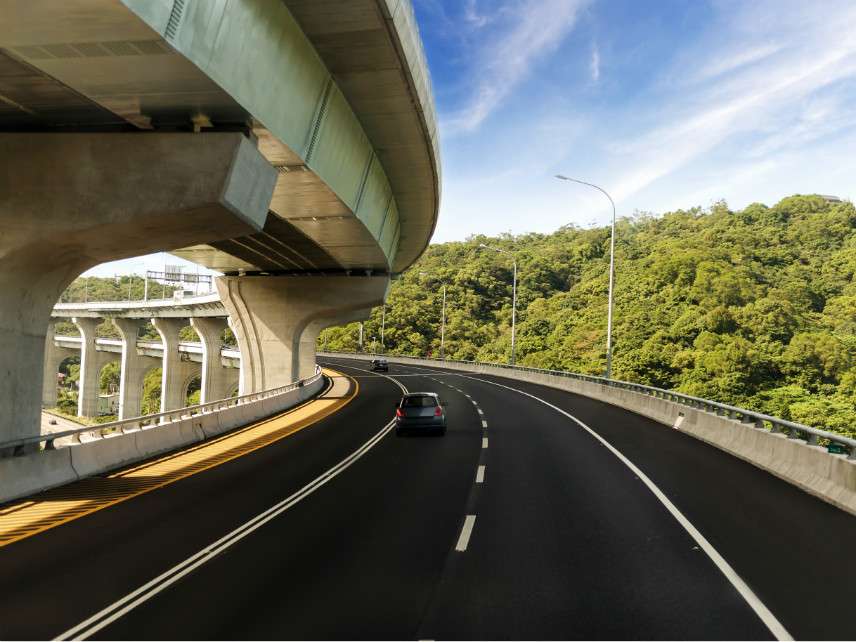Would Building Speed-Limit-Free Highway Lanes Reduce Greenhouse Gas Emissions?
One California legislator wants to combat global warming with more roadways.

Now that Gov. Gavin Newsom has killed off plans for a high-speed train line between Los Angeles and San Francisco, one California legislator has a new idea for making the state's transportation system greener: expand the highways.
Last week, state Sen. John Moorlach (R–Costa Mesa) introduced a bill that would add two speed-limit-free lanes to Interstate 5 and Route 99, which both run north-south through much of the state.
To fund the construction, Moorlach's bill would draw on money generated by the sale of carbon emission credits from the state's cap-and-trade system. Some $1.6 billion of that money has been spent to date on the state's high-speed rail line, which under Newsom's scaled-back version will run from Merced to Bakersfield. Current law mandates that 25 percent of this cap-and-trade revenue be spent on high-speed rail.
Moorlach's bill wants to lay into the cut for his new highway lanes, arguing that new, non-speed-controlled lanes would accomplish what boosters of highspeed rail promised but failed to deliver: rapid transportation within the state and a reduction in greenhouse gas emissions.
The rapid transportation part is pretty straightforward. The greenhouse gas reduction, not so much. The text of Moorlach's bill argues that building out existing highways will reduce congestion, and with it all the unnecessary emissions that come from vehicles idling on the interstate. "Traffic congestion increases the emissions of greenhouse gases as it causes automobiles to idle longer while on roadways," says the bill.
It's an interesting idea, but it stops making much sense once you drill down into the specifics.
It is certainly true that congestion is bad for emissions. A 2009 study from the University of California Transportation Center found that congestion that brings speeds down below 45 miles per hour on a freeway increases carbon emissions, by keeping cars on the road longer. Carbon emissions get even worse in severe stop-and-go congestion, where cars burn through more fuel by constantly having to accelerate from full stops.
The same study found that imposing congestion mitigation policies, such as ramp metering and congestion pricing (whereby drivers pay variable tolls that rise with the number of cars on the road), could reduce the emissions by as much as 12 percent.
But the same study found that carbon emissions start to increase once a driver starts hitting 60 to 65 miles per hour, since engines need to burn more fuel to maintain those high speeds. Allowing cars to travel at 100 miles an hour might be good for travel times, but it would make emissions worse, not better.
There is also the problem of paying for the new lane capacity. Moorlach's plan to use cap-and-trade funds for new roads has the same flaw as using those funds to build high-speed rail or public transit: It's ultimately being subsidized by taxpayers, not by the new infrastructure's users.
New lanes aren't necessarily a bad idea, says Baruch Feigenbaum, a transportation expert at the Reason Foundation (the nonprofit that publishes this website). After all, I-5 is an old road that will have to be rebuilt soon enough. But he thinks any new capacity should be funded by tolls—particularly if they're going to let commuters travel at faster speeds. "I think if you are offering people a higher service than they can get right now, they should pay for it, and it should be tolled," he says.
Rent Free is a weekly newsletter from Christian Britschgi on urbanism and the fight for less regulation, more housing, more property rights, and more freedom in America's cities.


Show Comments (86)